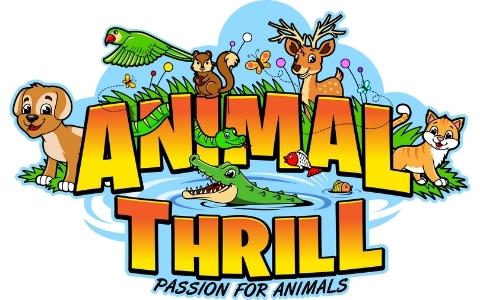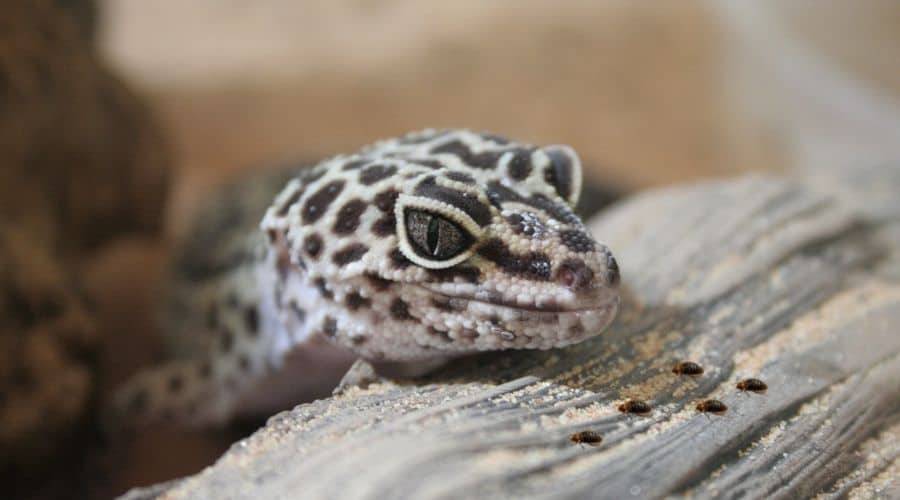Lizards are largely opportunistic eaters who dine on a wide variety of insects. While the largest lizards can eat small mammals, their smaller and very young cousins tend to stick to small insects like occasional bed bugs.
Sadly, you would need to catch a lot of bedbugs to feed just one tiny gecko. What lizard eats bed bugs?
Any very small lizard will eat bed bugs, but especially the Texas Banded Gecko, the Reef Gecko, and the Leaf-Toed Gecko. Lizards seek out meals that are the right size for their needs naturally. A young gecko will eat 6 to 12 bed bugs in a single day to be equivalent to several small crickets.
Table of Contents
Does Lizards Eat Bed Bugs
Lizards do eat bed bugs. In fact, they are generalists who will eat whatever insects are available to them at the time. This includes bedbugs and other insects that eat them.
More sizeable lizards may also eat small animals or baby birds, but I recommend looking at the smaller lizards if you want to get rid of tiny bugs. However, most pet lizards prefer mealworms or crickets over too-small bed bugs.
Bedbugs go through 6 life stages. Lizards likely wouldn’t eat their eggs, which are the size of a pinhead. After that, the bed bug goes through five juvenile stages where it is still considered a nymph.
A first-stage nymph is only about one and a half millimeters long, which wouldn’t provide a healthy meal to a lizard unless they ate quite a lot of them.
As the nymphs grow, they begin to resemble their adult selves, taking on the characteristics of ‘true’ insects. By the fifth stage, a nymph is around four and a half millimeters long.
While that’s a significant change, it’s still far too small to make a meal for a hungry gecko.
According to the EPA, “Adult bed bugs, in general, are: about the size of an apple seed (5-7 mm or 3/16 – 1/4 inch long); long and brown, with a flat, oval-shaped body (if not fed recently), and balloon-like, reddish-brown, and more elongated (if fed recently).”
Regrettably, even an apple-seed-sized bedbug isn’t enough food for a gecko. It would be more like a small appetizer.
If a small lizard-like a gecko came across these morsels, they could and probably would eat them. To make up for one cricket, a young gecko would need to eat six to twelve mature, preferably well-fed bed bugs.
On the plus side, that means a gecko could quickly eat a few dozen bed bugs in a single sitting. Sadly, that would hardly put a dent in the bed bug population.
How Do Lizards Eat Bed Bugs
Lizards eat bed bugs primarily by accident and chance. Finding prey is easy for a lizard. They simply rely on their vision to identify anything that is moving and the right size to make a good meal.
The nice thing about being an opportunistic eater is that you can munch on whatever is around.
Sadly, a lizard’s usual hunting method works against them when it comes to finding bed bugs. Usually, these clever insects hide in minuscule cracks and well-covered spaces until a warm-blooded, soft-skinned creature like humans comes along and falls asleep nearby. Only bedbugs that are out in the open would be easy pickings.
Since bed bugs are nocturnal, most lizards don’t encounter them. According to Animals Mom, “Geckos are the most noteworthy group of nocturnal lizards, though a few species are diurnal. Other examples include desert night lizards (Xantusia Vigilis) and the peculiar prehensile-tailed skinks (Corucia zebrata) of the Solomon Islands.”
3 Lizards That Eat Bed Bugs
While relatively few lizards eat bed bugs, a few enjoy them. The smaller nocturnal lizards are most likely to eat these pests.
Below are 3 types of geckos that eat bedbugs naturally and found in North America:
1 – Texas Banded Gecko (Coleonyx Brevis)
Texas Banded Geckos are known for their distinctive warning chirps. Amusingly, they also twitch their tails like cats while hunting.
According to Herpidia, these mid-sized geckos make their homes in ” Southern New Mexico through southern Texas (almost to the coast) and northeastern Mexico.”
2 – Reef Gecko (Sphaerodactylus Notatus)
Reef geckos are common in southern Florida and the Florida Keys. This species is the smallest geckos and among the tiniest lizards on earth.
At just one and three-quarters to two and a half inches long when fully grown, these tiny geckos are more likely than most to make a meal out of the diminutive bed bugs.
3 – Leaf-Toed Gecko (Phyllodactylus Xanti)
The Leaf Toed Gecko is indigenous to southern California and parts of Mexico. At four to five inches long, the adults typically eat larger insects, but young leaf toes might make a meal of bed bugs.
Moreover, since they naturally live in cracks and crevices, these geckos are more likely to encounter bedbugs in the wild.
Helpful Tips To Know About What Lizard Eats Bed Bugs
A few nocturnal lizards eat bed bugs, but it’s more common when they are young or starving. Although most lizards are diurnal and only hunt during daylight when they’re awake, geckos are up at night when bed bugs are most active.
Here are more helpful tips to know about what lizard eats bed bugs.
- Most small predators that eat bed bugs are more of a problem than lizards. Spiders, kissing bugs, and other predatory insects will help with pest control, but I don’t recommend introducing them to your home.
- Lizards seek out meals that are the right size for their needs naturally. Usually, adult geckos and lizards eat bed bugs secondhand because smaller predator insects have already eaten them. Spiders and roaches are a more suitable meal for adult lizards than tiny bedbugs.
- Mature bed bugs can lay one to seven eggs per day, multiplying quickly and causing significant problems in human homes. Using lizards for pest control isn’t a practical solution. Plus, an abundance of loose lizards in your home is unsanitary. Lizards poop wherever they want, and it would take many of them to keep the pests under control.
Final Thoughts
If you have a pet lizard and it has accidentally eaten a bed bug or even a lot of bed bugs, there’s not much reason to worry.
Since your pet is cold-blooded bedbugs aren’t attracted to them, and these annoying pests are not a significant danger to any creature they don’t bite.
However, if you were hoping to turn a few lizards into a biological army to fight off the bed bug hordes, you’ll be sorely disappointed.
Once the lizards eat their fill, they’ll stop. Plus, you’d need a huge number of lizards to handle an infestation, and then you’d have a problem with loose lizards creating a potentially unsanitary condition in your home.
While geckos are better than spiders and roaches, they aren’t a practical solution to bed bugs.

